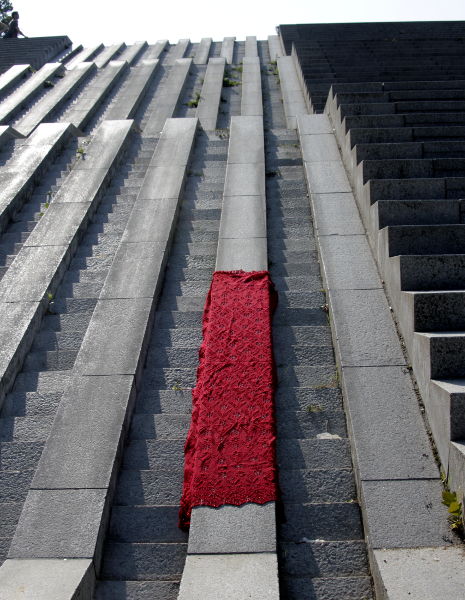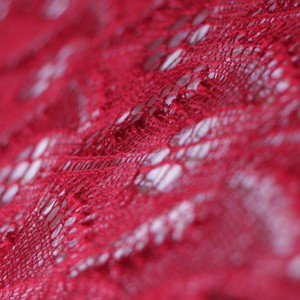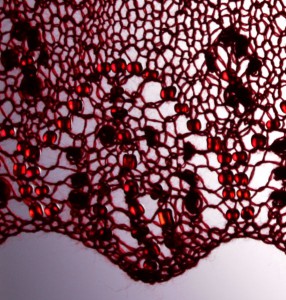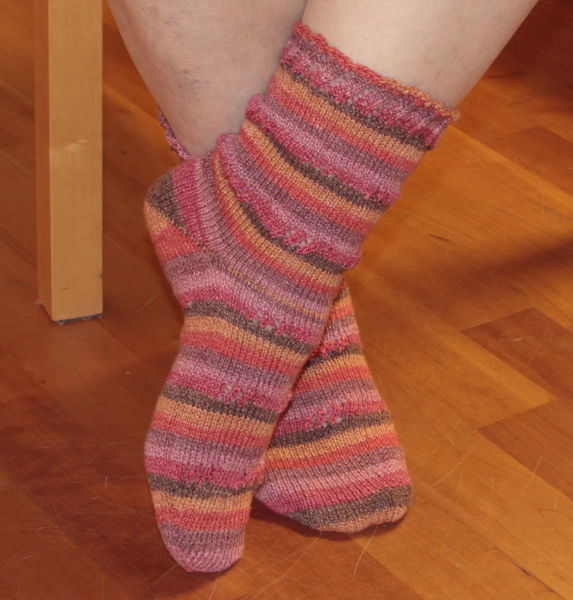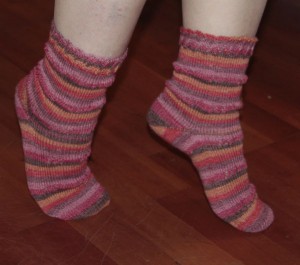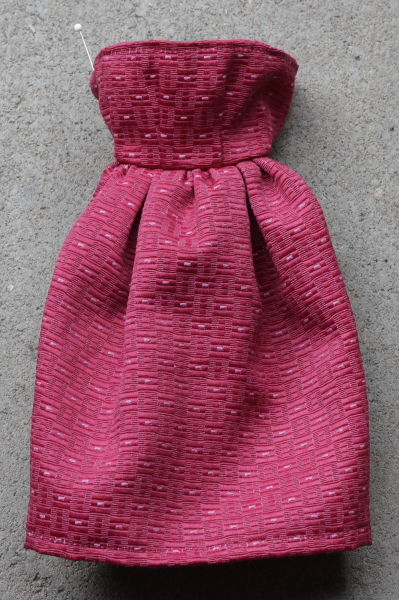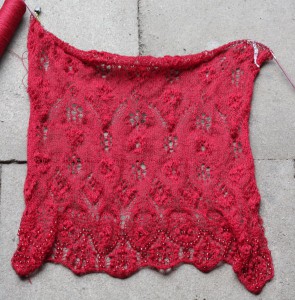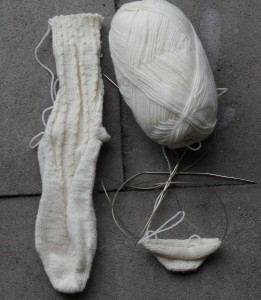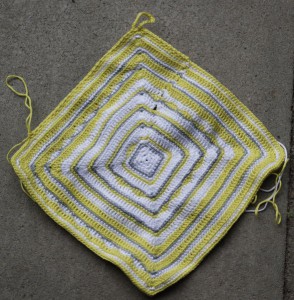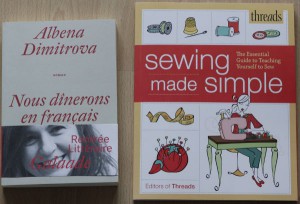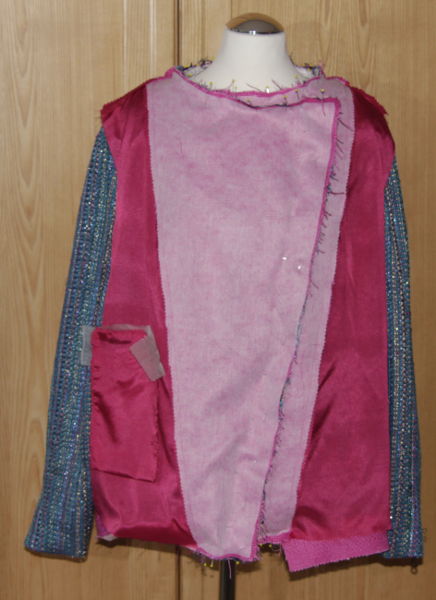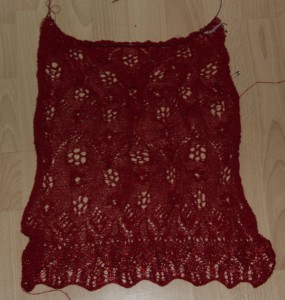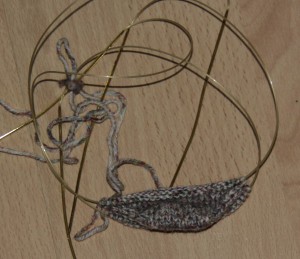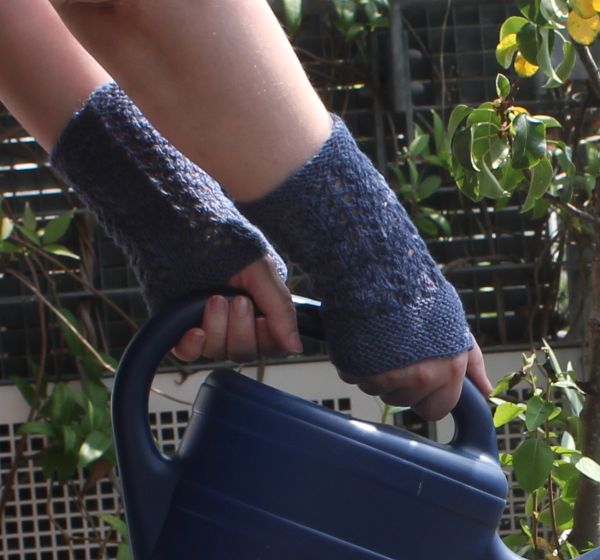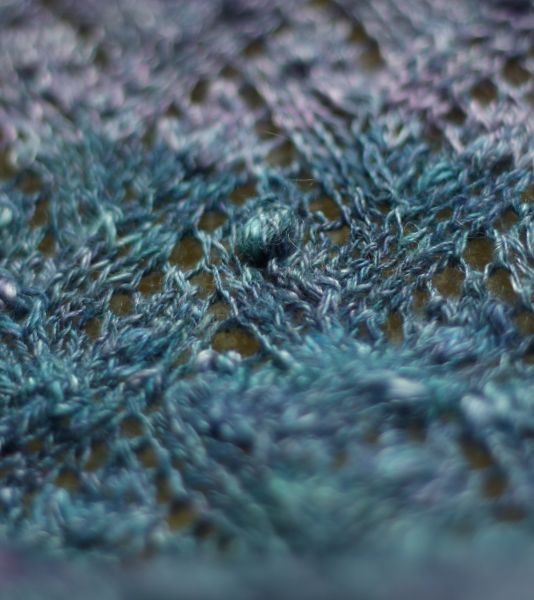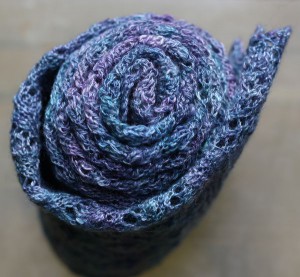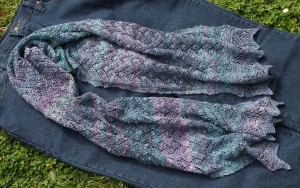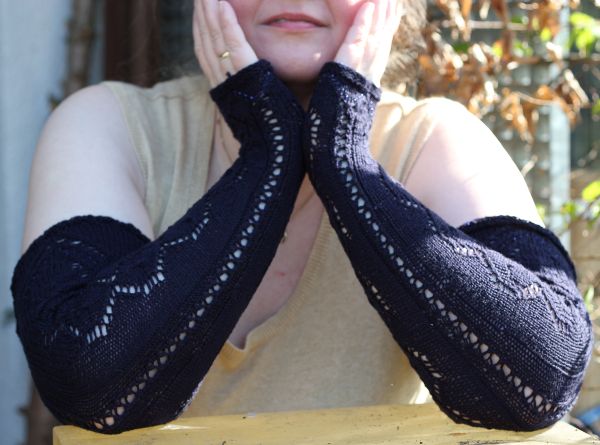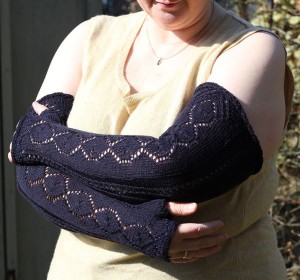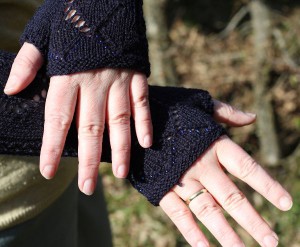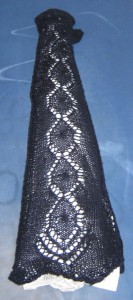Fresh from the needles April 2017
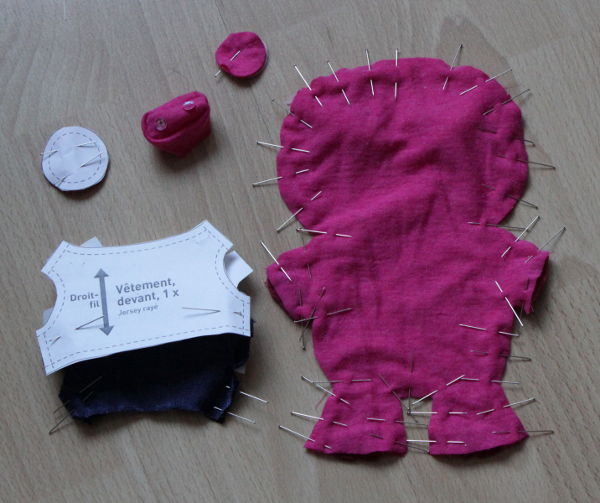 Nein, das ist keine Vodoo Puppe, sondern Stoffreste meines Shirts, dessen Fortschritt ich im Februar gezeigt hatte. (Das Shirt ist fertig und seit wenigen Tagen auch photographiert. Kommt also auch noch.) Da der Stoff so schön pink ist, habe ich mir aus dem Aranzi Aronzo Buch die Anleitung für ein Schweinchen rausgesucht.
Nein, das ist keine Vodoo Puppe, sondern Stoffreste meines Shirts, dessen Fortschritt ich im Februar gezeigt hatte. (Das Shirt ist fertig und seit wenigen Tagen auch photographiert. Kommt also auch noch.) Da der Stoff so schön pink ist, habe ich mir aus dem Aranzi Aronzo Buch die Anleitung für ein Schweinchen rausgesucht.
No, this is not a Vodoo doll, these are remnants from the shirt I’ve shown here as WIP in February. (Meanwhile it’s finished and even photographed since Saturday, so I will show that also in not too long.) Since the fabric is very… pink I picked from my book by Aranzi Aronzo the pattern for a piggy.
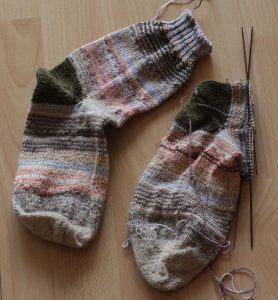 Sockentechnisch bin ich schon zwei Paar Socken weiter. (Ja, der Flaschenhals ist im Moment das Photographieren.) Ich arbeite schon für unsere diesjährige Weihnachtsaktion für Obdachlose und wie man sieht, gibt es wieder Socken. Das ist mein zweites Paar dafür, am Schaft der zweiten Socke angekommen. Wie man unschwer erkennt, sind es Restesocken.
Sockentechnisch bin ich schon zwei Paar Socken weiter. (Ja, der Flaschenhals ist im Moment das Photographieren.) Ich arbeite schon für unsere diesjährige Weihnachtsaktion für Obdachlose und wie man sieht, gibt es wieder Socken. Das ist mein zweites Paar dafür, am Schaft der zweiten Socke angekommen. Wie man unschwer erkennt, sind es Restesocken.
Sockwise taking the pictures is the bottleneck, because those are already the second pair since February. They are already for the christmas party for the homeless charity this year. I started the leg part of the second sock. As you can easily see it’s socks from the remnants.
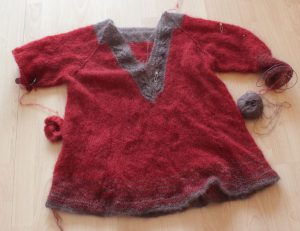 Mein Strickoberteil ist ein ganze Stück weiter gekommen. Es hat einen Saum und hat zwei Teilärmel. Zuerst habe ich auf der einen Seite bis zur letzten roten Reihe gestrickt. Dann die andere Seite, damit ich nicht zu viel auftrennen muß, falls das rote Garn doch nicht reicht. Dann die andere Seite bis vor die erste braune Reihe. Jetzt habe ich den Rest vom roten Garn gewogen und denke, daß es reichen sollte. Also kann ich jetzt doch den ersten Ärmel fertig stricken und muß kein zusätzliches braunes Knäuel anfangen. Kompliziert, oder?
Mein Strickoberteil ist ein ganze Stück weiter gekommen. Es hat einen Saum und hat zwei Teilärmel. Zuerst habe ich auf der einen Seite bis zur letzten roten Reihe gestrickt. Dann die andere Seite, damit ich nicht zu viel auftrennen muß, falls das rote Garn doch nicht reicht. Dann die andere Seite bis vor die erste braune Reihe. Jetzt habe ich den Rest vom roten Garn gewogen und denke, daß es reichen sollte. Also kann ich jetzt doch den ersten Ärmel fertig stricken und muß kein zusätzliches braunes Knäuel anfangen. Kompliziert, oder?
My knitted top did advance a lot. It has a hem and has two partial sleeves. I did the first sleeve until the last red row. Then I started the other side, so I will not have to back knit too many rows if the red yarn was not enough. Then I knitted the other side up to just before the first brown row. Now I’ve weight the rest of the red yarn and think it should be enought. So next will be to finish the first sleeve and I will not have to start an extra skein of yarn. Kind of complicated, not?
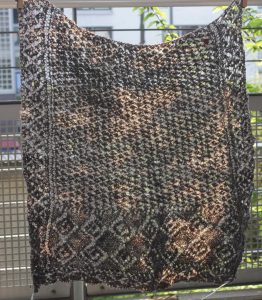 Das Lacetuch ist im vierten Rapport des Mittelteils und ich habe das dritten Knäuel Garn angefangen. Sieht allmählich nach Tuch aus…
Das Lacetuch ist im vierten Rapport des Mittelteils und ich habe das dritten Knäuel Garn angefangen. Sieht allmählich nach Tuch aus…
My lace shawl is somewhere in the forth main repeat and I’ve started the third skein of my yarn. Starts looking like a shawl…
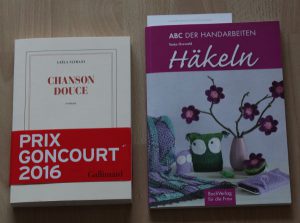 Zum Abschluss noch ein kleiner Blick auf die aktuelle Lektüre. Beides nicht sehr fortgeschritten. Ein französischer Roman, der fürchte ich kein gutes Ende nehmen wird. Und ein Häkelbuch, das schon ewig drauf wartet, für einen Rezension dran zu kommen. Der Anfang gefällt mir schon mal, es werden nämlich Teshäklerinnen erwähnt. Das gibt doch schon mal zur Hoffnung Anlass, daß man auch mit den Anleitungen was anfangen kann. 🙂
Zum Abschluss noch ein kleiner Blick auf die aktuelle Lektüre. Beides nicht sehr fortgeschritten. Ein französischer Roman, der fürchte ich kein gutes Ende nehmen wird. Und ein Häkelbuch, das schon ewig drauf wartet, für einen Rezension dran zu kommen. Der Anfang gefällt mir schon mal, es werden nämlich Teshäklerinnen erwähnt. Das gibt doch schon mal zur Hoffnung Anlass, daß man auch mit den Anleitungen was anfangen kann. 🙂
And to finish a short look on my books from the night stand. Both more or less just started. I have a French novel which I think will not have a kind of happy ending. And a book about crochet which has been waiting for quite some time to be reviewed. I like the beginning already, because it mentions test crocheters. That gives me hope for good instructions. 🙂

